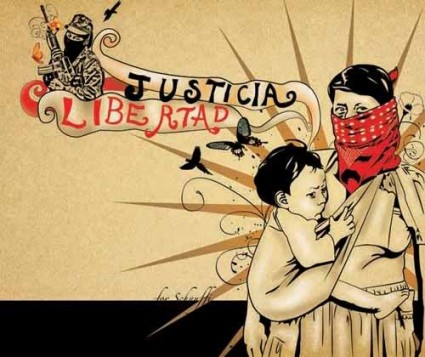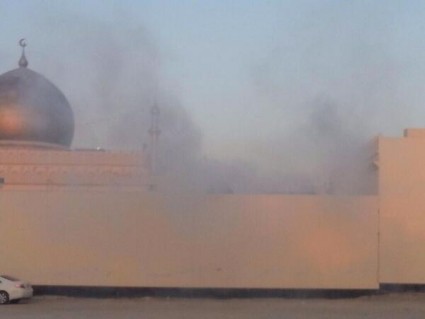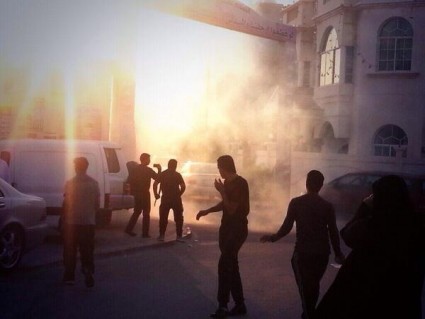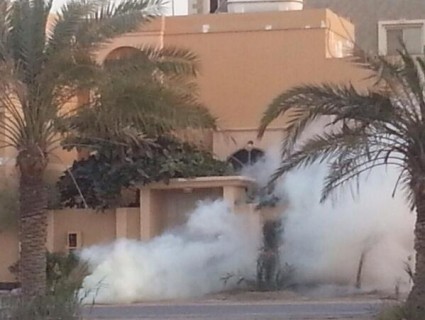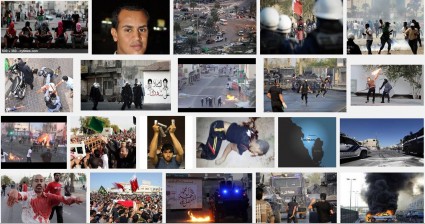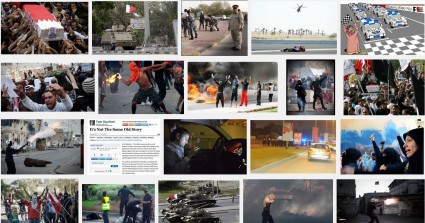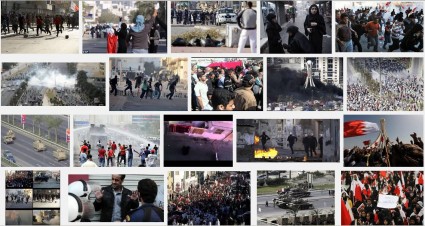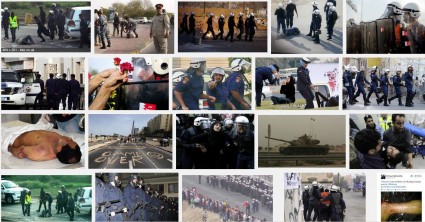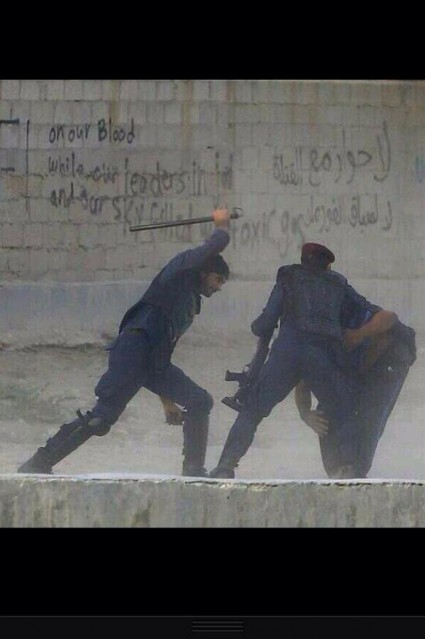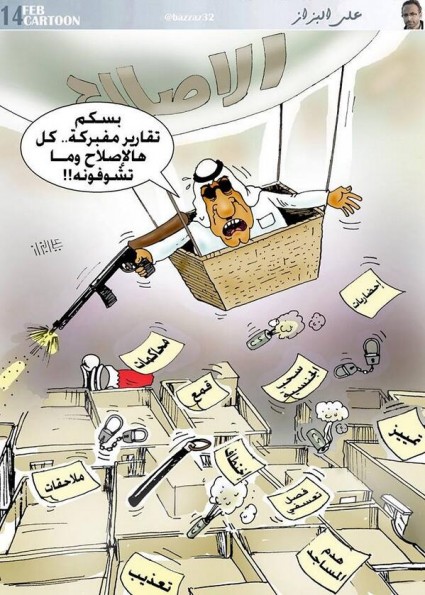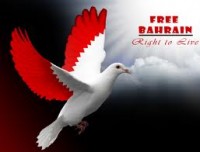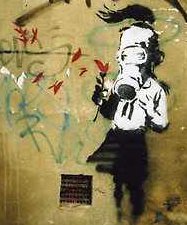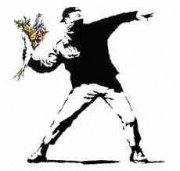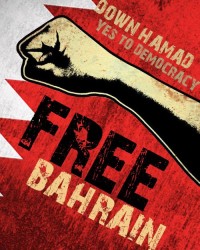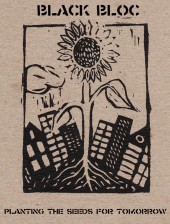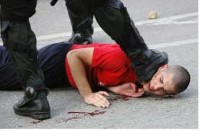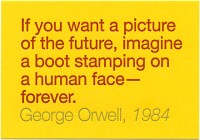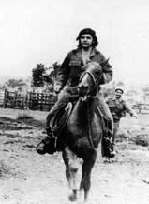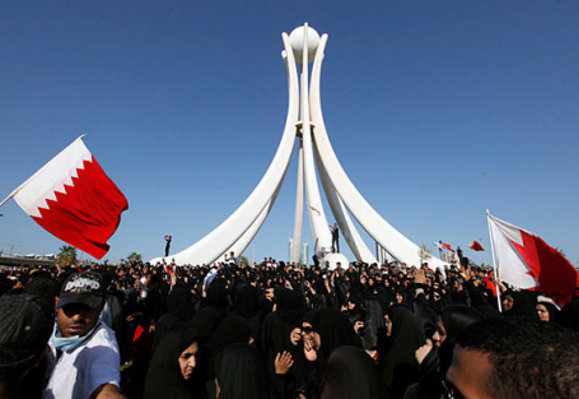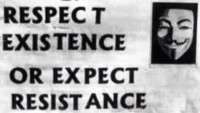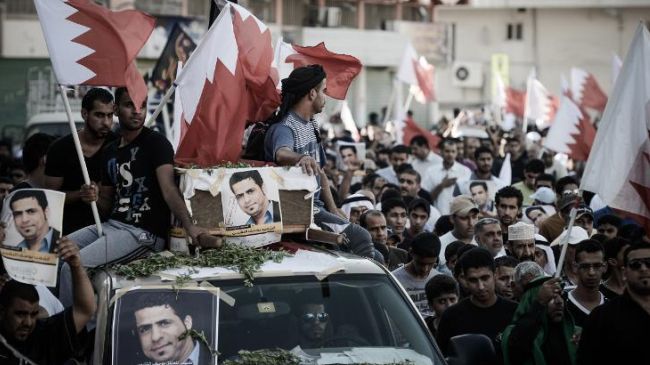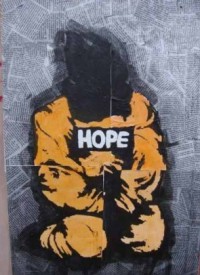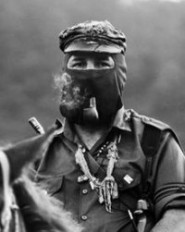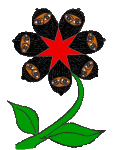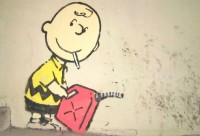KSA Free Human Rights Activists!
Amnesty Urges Riyadh to Free Rights Activists
8 March, 2-14 – Amnesty International
TEHRAN (FNA)- Amnesty International called on Saudi Arabia to release two founders of a local human rights organization who have spent nearly a year behind bars.
Mohammad al-Qahtani and Abdullah al-Hamid were sentenced to 10 and 11 years in jail respectively on 9 March 2013. Both are co-founders of the Saudi Civil and Political Rights Association (ACPRA), one of the few organizations in the country recording human rights violations and assisting families of detainees held without charge, Al-Alam reported.
“Mohammad al-Qahtani and Abdullah al-Hamid are guilty of nothing more than daring to speak out on Saudi Arabia’s dire human rights record. The reality is that the human rights situation in Saudi Arabia is abysmal and anyone who risks highlighting flaws in the system is branded a criminal and tossed in a jail cell,” said Said Boumedouha, Amnesty International’s Deputy Director for the Middle East and North Africa.
“By locking up two prominent human rights activists Saudi Arabia is brazenly flouting its international obligations and has displayed a flagrant disregard for people’s rights to freedom of expression and association”.
Mohammad al-Qahtani and Abdullah al-Hamid were found guilty of several “offences”, including disobeying the ruler, inciting disorder and setting up an unlicensed organization. Their sentences were upheld by the Court of Appeal in January 2014. In the same trial session the court also ordered the disbanding of ACPRA and confiscation of its property. Even after their release from prison both men will be subject to lengthy travel bans.
Earlier this week the two men began a hunger strike in protest at the deterioration of their prison conditions. Both men have suffered as a result of arbitrary decisions by the prison authorities including confiscation of their books and personal belongings and moving them to prison cells that pose serious dangers to their health. Mohammad al-Qahtani was reportedly placed in solitary confinement since he started his hunger strike.
It is feared that a new anti-terrorism law introduced last month, featuring an overly vague-definition of terrorism and granting the Ministry of Interior sweeping powers, will speed up the crackdown on peaceful dissent. …more
March 9, 2014 Add Comments
Bahrain Regime launch attacks on Shia celebrations of Hazrat Zeynab
Bahrain: Al Khalifa Forces Raid Ceremonies Marking Hazrat Zeynab (SA) Birthday
ABNA – 8 March, 2014
The forces of Al Khalifa regime have attacked ceremonies held to celebrate the birthday anniversary of Hazrat Zeynab (SA).
The ceremonies, which were held on Thursday night, March 6, in two districts east of Manama, came under attack by regime forces, Al-Wefaq website reported.
They fired tear gas at the participants in the ceremonies, reports said.
Ali Al-Ashiri, a representative of the district in Bahrains parliament (who has resigned), said the move by Al Khalifa regime to attack the celebration was an attempt to restrict people religious freedom.
Bahrain has been the scene of almost daily protests against the Al Khalifa regime since February 2011, when thousands of pro-democracy protesters took to the streets, calling for the royal family to leave power.
The regime has responded to the peaceful demands of the Bahraini people by cracking down on the demonstrations. …more
March 9, 2014 Add Comments
Bahrain on the Brink
Bahrain on the Brink
4 March, 2014 – by marcowenjones – marcowenjones blog
Yesterday (03/03/2014), the Bahrain Ministry of the Interior reported that three bombs had been detonated in the village of Daih. One explosion killed three policemen, including an Emirate officer. The Ministry of the Interior announced today that 25 people had been arrested in connection with the attack. Naturally, the MoI will make quick arrests, whether the accused are guilty or not. To fail to do so would look weak, and potentially inflame tensions between those who wish to enact their own style of vigilante retribution. Human Rights groups reported house raids and collective punishment in Daih following the attack, and this video shows a policeman kicking a detainee a few times as he (the detainee) lay on the ground.
Although there were four bombs, it is unclear exactly who is responsible for what. At least two groups have claimed responsibility via social media for the attacks in Daih – the Al Ashtar Brigades and the Popular Resistance Movements. The former group’s confession can be read here, while the latter’s can be read here. Although it is possible that the two groups planted separate bombs, or co-ordinated attacks, they do not mention this. The Popular Resistance Brigade state they conducted an attack near the Al Hashmi centre in Daih. The Al Hashmi centre is the location outside which most of yesterday’s grisly pictures of wounded/dead officers emerged. (see here then here to view the Al Hashmi centre(jump to 0.28). Similarly, the Al Ashtar brigade took responsibility for the attack that resulted in the death of three policemen – presumably at the Al Hashmi centre too. So far, different media outlets have attributed the attacks to different parties. Khaleej Times, for example, have attributed it to the Popular Resistance Brigade, while the AFP, Financial Times and Gulf News attributed it to the Al Ashtar Brigade.
Regardless of who did it it, it is interesting that this is not the first time they appear to have claimed responsibility for the same attack. In May, both groups seemed to take credit for the same attack against policemen in the village of Karanah(See here and here). Whether or not it was the same attack cannot be certain, yet they both happened in the same place at around the same time. It is also interesting to note that a Twitter account for the Popular Resistance Brigade was linked to the Bahrain government (however, there is no evidence to suggest Facebook and Twitter accounts are linked). Ultimately, it is not clear who runs these accounts. They could be government sponsored accounts, they could be real militant groups, or they could be some keyboard activists with a knack for religiously infused Arabic rhetoric.
As for the Bahraini government, they have not made an official announcement yet as to who was responsible, but the names of both groups have featured frequently in the local newspapers following other bomb explosions. Recently, a policeman claimed that during his investigations he found that Al Ashtar brigades were linked to the Coalition of February 14th. Furthermore, the government seem to be taking the threat seriously, as they recently put Al-Ashtar Brigade, the Popular Resistance Brigade, and the Coalition of February 14th on the terrorist blacklist. Interestingly, as Dr.Abdulhadi Khalaf points out, the Deputy Chairman of the Dubai Police Leiutenant General Dahi Khalfan seems to have single handedly discovered that the person who killed one of the Emirate policeman (specifically?) was trained by Hezbollah and used to visit Lebanon a lot. Step aside Benedict Cumberbatch. …more
March 9, 2014 Add Comments
Bahrain Courts of Injustice to hear “police bombing” case built on torture, family detentions
Bahrain courts of injustice to hear “police bombing” case built on torture, family detentions, expedience
8 March, 2014
Bahrain defence lawyers are worried that the government will rush through this case, declare people guilty on no evidence and pronounce executions and not merely life sentences.
The Prime Minister went on T.V. talking about “expediting” the case.
25 men were detained including 10 members of Al Samee family including 3 brothers, 3 were detained in 1990s and in a 2012 for bomb preparation, released and acquitted.
NO COMPLAINTS from the West about 25 men being detained, tortured, with no access to lawyers for SIX days.
Why were men taken to bomb site and photographed – to frame them? No details on bombing as usual.
It’s pressure on Opposition in run-up to this week’s Geneva Human Rights Conference that will focus on Bahrain.
No mention of the 2 Bahraini police killed, all on the UAE guy. Nice to know that the Gulf Co-operation police don’t get involved in “confrontations”. Like the Jordanians don’t do torture.
The detainees have been accused by Ministry of Interior of involvement in the explosion in Al Daih where 3 security men were killed. The police broke up a march at 24 year old Dirazi’s funeral, who died in prison.
This will become a major TRAVESTY OF JUSTICE with men put on death row unless the U.K. and &U.K. insist they go through the proper trial procedures.
That will lead to more anger and instability. What action can you take?
25 detainees: Abbas Jameel al samee – Mohd Jameel al samee – Ali jameel al samee – Younis yousif al samee – Ahmed yousif al samee – Mahmood yousif al samee – Taher yousif al samee – Alaa hameed al samee – Husain ebrahim al samee – Taher ebrahim al samee – Faisal al Haddar – Mohd Nasir – Sami Mira Mushaymaa – Redha mirza Mushaymaa – Abdul Zahra mirza Mushaymaa – Husain ali hubail – Mohd Saeed – Fadhul Abbas al mutawaa – Abdullah Mohd al mutawaa – Hassan Kareem khalil – Mohd Abdul Redha Falah – Mohd Abdul Husain – Sadeq al Fardan – Husain ebrahim – Hamad jumaa
The Khalifas target and detain whole families:
Ghasras, 3 in prison, 1 in exile, Moqdads ( 7 / 8 in prison)Hasan Alis, 3 people, Our family, 3, and Al Shaikh, 5 and Al Zaki family.
Refs: Article by Patrick Coburn, in the Independent on 11th July 13. BCHR . 17th May 13 “Bahrain: Injuries, Arrests and House Raids. Case of a Bahrini Family.
European- Bahraini Organisations for H.R. Al Zaki Family subjected to mass arrests in B. 11th May 2013.
March 9, 2014 Add Comments
The Bahrain – Ukraine Duality
The Bahrain – Ukraine Duality
by RANNIE AMIRI – counter punch – 08 March, 2014
When President Obama recently spoke on “… the principle that no country has the right to send in troops to another country unprovoked …” he was of course referring to Russia’s concerns over unrest in Ukraine and its subsequent troop movements into the Crimean Peninsula. No such “principle” was evoked, however, when Saudi Arabia invaded Bahrain in March 2011 in its violent suppression of popular, pro-reform sentiment expressed by the overwhelming majority in the Gulf island nation.
Unlike Ukraine, the peaceful protests in Manama’s Pearl Roundabout did not depose a constitutionally elected government. Obviously, the centuries-old rule of the al-Khalifa family has never been by mandate at the ballot box. Likewise, adherence to the country’s National Action Charter put forward by King Hamad al-Khalifa has been solely to the extent of perpetuating dynastic rule.
Stephen F. Cohen, professor of Russian Studies and History Emeritus at New York University, describes how European and NATO agitation along Russia’s borders led to today’s conflict in Ukraine:
“… even though we always say that Russia and Putin invaded tiny little Georgia, the fact is that the war was begin [sic], by the American-backed military forces of Georgia– because they attacked Russian enclaves in Georgia.”
He elaborates, “And even if we just go back to this November, just a few months ago, when the protesters came into the streets in Ukraine, Putin said to Europe and Washington, why are you forcing Ukraine to choose between Russia and Europe? We’re prepared with Europe to do a kind of mini-Marshall Plan to bail Ukraine out. Let’s do it together. And that was refused by Washington and Brussels. And that refusal led to the situation today.
“… the fundamental issue here is that, three or four years ago, Putin made absolutely clear he had two red lines. You remember Obama’s red lines in Syria. But Putin was serious. One was in the former Soviet republic of Georgia. NATO and NATO influence couldn’t come there. The other was in Ukraine. We crossed both. You got a war in Georgia in 2008, and you have got today in Ukraine because we, the United States and Europe, crossed Putin’s red line. Now, you can debate whether he has a right to that red line, but let’s at least discuss it.”
In contrast, Bahrainis demands for a constitutional monarchy, elected prime minister, independent judiciary and representative parliament did not come at the hands of outside forces or foreign sponsors and by all accounts, are wholly indigenous. The vast majority of people support such reforms; they are not split as are Ukrainians between two competing spheres of power. The canard of Iranian interference in Bahrain’s affairs is nothing more than the tired refrain of Gulf dictatorships preying upon the sectarian and nationalistic fears of its people. Even former U.S. Secretary of Defense Robert Gates said at the time, “I expressed the view that we had no evidence that suggested that Iran started any of these popular revolutions or demonstrations across the region.” WikiLeaks cables confirm allegations of Iranian interference to be unsubstantiated.
Three years ago, bolstered by the presence of the Saudi military and “Peninsula Shield” forces which made the quick, 16-mile trek across the King Fahd causeway, Bahrain’s security servies—90 percent of whom are non-Bahraini nationals—viciously cleared Pearl Roundabout. Tanks and bulldozers rolled in, riot police shot at the encamped, helicopters hovered overhead and fired at homes, hospitals were blocked and doctors beaten as they tended to the wounded. The capital’s Salmaniya Hospital was besieged and soon became a center of interrogation, torture and resistance.
As of this writing, no violence has been perpetrated by Russian forces in Crimea and no shots have been fired.
In contrast to Obama’s rebuke of Putin, the crackdown in 2011 only elicited a call for “maximum restraint.”
Much has transpired in Bahrain since the Saudi invasion. One only needs to visit the website of the Bahrain Center for Human Rights to see how the show trials, imprisonment of pro-democracy activists, collective punishment and wanton human rights abuses have utterly devastated the society. This overt oppression has been ignored by the United States and its European allies, the same nations that now express outrage at Russia’s incursion into Crimea. …more
March 8, 2014 Add Comments
Coup in Ukraine: A warning to the international working class
This strengthening of the fascists would not be possible without the systematic support of the media and the main political parties in Europe and the US. Liberal newspapers such as the New York Times and the Süddeutsche Zeitung have produced a deluge of propaganda portraying events in Ukraine as a “democratic revolution”, glossing over the role of fascists and glorifying the coup.
Coup in Ukraine: A warning to the international working class
World Socialist Web Site – 25 February, 2014
The recent events in Ukraine are a warning to the international working class. Under conditions in which workers lack both a perspective and a party to enable them to intervene independently in political events, the situation in Ukraine has developed in an extremely reactionary direction. What had been unthinkable in Europe since the fall of Hitler’s Third Reich in 1945 has come to pass: while the US and Germany ruthlessly and recklessly destabilized the country, fascists became the decisive force on the ground.
The crisis was sparked in November of last year by President Viktor Yanukovych’s refusal to sign an Association Agreement with the European Union. This was unacceptable for Washington and Berlin. As Theo Sommer put it in Die Zeit, the issue at stake was “Where should the EU’s eastern boundary, and the western boundary of the Russian sphere of influence, be situated?”
The US and Germany systematically supported the pro-EU opposition, which organized the demonstrations against Yanukovych. In addition to Julia Tymoshenko’s Fatherland and Vitali Klitschko’s UDAR—two right-wing parties with close ties to the German CDU—the opposition also included the fascist Svoboda party of Oleh Tyahnybok.
The fact that Svoboda employs neo-fascist symbols, agitates against foreigners, Jews, Hungarians and Poles, maintains close relations with the French National Front and is compared to the ultra-right Greek Golden Dawn and Hungarian Jobbik by the World Jewish Congress, has not prevented the foreign ministers of the United States and Germany from publicly embracing Tyahnybok.
The initial opposition demonstrations, however, failed to force Yanukovych to resign. At this point, paramilitary fascist militias were mobilized to intensify the conflict and propel the country to the brink of civil war. The leading role was played by the so-called Right Sector, whose masked militants, equipped with helmets, batons, fire bombs and firearms soon dominated the center of Kiev, carrying out fierce attacks on the security forces. News reports estimate their number in Kiev alone to be between 2,000 and 3,000.
The conservative Die Welt paper termed the Right Sector an “informal association of right-wing and neo-fascist splinter groups”. Time magazine, which interviewed its leader Dmitry Yarosh, writes that their “ideology borders on fascism and it enjoys support only from Ukraine’s most hard-line nationalists”. Many of its members are former soldiers or fought in the conflict on the side of Azerbaijan, and in Chechnya and South Ossetia against Russia.
It was these paramilitary fascist militias which ensured that the situation escalated last Thursday. While they fought bloody battles with the security forces, resulting in dozens of casualties on both sides, the German, Polish and French foreign ministers flew into Kiev and forced Yanukovych to accept a “compromise” following hours of negotiations. It was the beginning of the end for the president.
When the Right Sector spoke out against the agreement and threatened to resume hostilities, the military declared its neutrality, and many deputies from Yanukovych’s Party of Regions changed sides. This sealed his fate.
The situation in Ukraine is still extremely tense and unstable. The various camps of the opposition are fighting for political dominance, while there is the danger of secession and civil war in Crimea and the east of the county. The fascist forces upon which the Western powers and the opposition relied to force through regime change are demanding their pound of flesh and will play an important role in the political life of the country.
When she spoke at Independence Square after her release from prison, former prime minister and Fatherland party leader Yulia Tymoshenko made a series of overtures to the fascist militias. She expressly thanked Right Sector for its “contribution to the revolution.” The new interior minister promised that the “Self-Defense Forces from Maidan” would be integrated into the new order. …more
March 4, 2014 Add Comments
Putin holds aces, Obama deuces
Putin holds aces, Obama deuces
3 March, 2014 – By Finian Cunningham – PressTV
As Russian troops pour into Ukraine consolidating control over the southern Crimea region it looks as if President Putin has finally had enough of playing games according to bent Western rules.
Vladimir Putin knows that world public opinion and a good many nations are on Russia’s side in its show of strength against the cabal of rogue Western states led by Washington.
The morally bankrupt Western cabal tried to play its “sanctimonious card” at the weekend after Putin ordered more troops into the southern Ukrainian territory. American President Barack Obama said with tiresome cliché “the US stands with the international community in condemning violation of Ukraine’s sovereignty”.
Even more absurdly, US Secretary of State John Kerry later lambasted Russia’s “brazen aggression”. With a ridiculous straight face, probably due to years of botox treatment, Kerry said: “You just don’t invade another country on phoney pretext in order to assert your interests. This is an act of aggression that is completely trumped-up in terms of its pretext. It’s really 19th century behaviour in the 21st century.”
Russian Foreign Minister Sergei Lavrov shot back that US threats of sanctions and veiled military confrontation against Moscow are “completely unacceptable”.
And the subsequent increase in Russian troop deployment in the Crimea seems to be a clear sign that Moscow is snubbing Washington’s warnings with the contempt that they deserve.
For a start, Russia knows that it is morally and legally right to make its latest moves. With a Russian ethnic population comprising up to 60 per cent of the Ukraine, particularly in the East and South of the country, Moscow has a responsibility to protect its compatriots in a territory with a long shared history and heritage. Russia has real vital national interests at stake in the Ukraine, and it is entitled to exercise this protection – unlike countless American trumped-up interventions around the globe.
Secondly, Russia knows that the phoney American rulers and their European proxies have been making a mockery of international law in Ukraine over many years and especially in the last three months, during which the West has inflamed social and political unrest to the point where the elected authorities in Kiev were ousted two weeks ago in a Western-backed coup d’état. It is only Western rulers and their delusional media who pretend that the events in Ukraine were “a popular uprising”.
The American, British, French and German governments have orchestrated a regime change operation, which now sees a rabble of neo-Nazis and fascists in power in Kiev. The rabid anti-Russian politics of this Western-backed junta poses a real and present threat to the pro-Russian population. True to plan, this junta of unelected quislings who came to power on the back of murderous street violence – violence fully supported and encouraged by the Western states – will in short order give the green light to NATO troops being stationed on Russia’s borders. …more
March 4, 2014 Add Comments
Ukraine: The Dangers of Dealing with Delusional Western Leaders
Ukraine: The Dangers of Dealing with Delusional Western Leaders
Finian CUNNINGHAM – 04 March, 2014 – The Strategic Culture Foundation
Fittingly, given the coincidence of the US cinema Oscars ceremony held at the weekend, American politicians and their Western allies were also starring in bravura performances of hypocrisy and double think with regard to their denunciations of Russia’s recent security response to chaos in Ukraine.
Increased military maneuvers apparently by Russian troops in Ukraine’s southern Crimean Peninsula over the weekend were met with strutting over-the-top reactions from Washington and other Western members of the so-called Group of Eight economic nations.
The US, Britain, France and Canada said they were canceling plans to attend the G8 summit to be held in Sochi later this June in protest over what they said was Russia’s «violation of Ukraine’s sovereignty». German Chancellor Angela Merkel declined to endorse calls for Russia’s suspension from the G8, however the German leader in a phone call with American President Barack Obama complained that the Russian head of state, Vladimir Putin, was «living in another world», according to the New York Times.
British Prime Minister David Cameron said he agreed with Obama’s earlier admonition to Russia that there «must be significant costs» imposed on Moscow for its military actions in Crimea.
French President Francois Hollande issued a statement urging Putin to «not use force» in any involvement of Russian troops on Ukrainian territory. That’s a nice touch of self-parody from Hollande given that he ordered hundreds of French troops into the Central African Republic in recent months – an intervention that sparked thousands of deaths from sectarian clashes between Muslim and Christian communities there and which has now resulted in a full-blow humanitarian crisis in that country.
While Cameron and Obama talk about «significant costs» to be sanctioned against Russia for troop movements in Crimea – during which not a single shot was fired nor has anyone been injured – both British and American leaders continue to have evaded prosecution for illegal wars of aggression in Afghanistan and Iraq where more than one million people have died and millions more wounded and displaced.
But the star political performer among the Western hypocrites was American Secretary of State John Kerry. His botox treatment may limit facial movements, but Kerry’s rhetoric made up for that in playing to the gallery. He denounced to US media what he called «incredible, brazen aggression» by Russia towards Ukraine.
«You just don’t invade another country on phoney pretext in order to assert your interests», said Kerry. «This is an act of aggression that is completely trumped up in terms of its pretext. It’s really 19th century behaviour in the 21st century».
These words come from the top diplomat of a country that has used countless phoney pretexts – from weapons of mass destruction to humanitarian protection – to subvert and invade other sovereign states, inflicting millions of deaths; not just in the distant past but right now in the present with regard to covert operations and sanctions in Syria, Iran, Somalia, Yemen, Pakistan, among other places. …more
March 4, 2014 Add Comments
Obama’s neoNazi Coup, His Dumbest Plan Yet
The Coup in Ukraine – Obama’s Dumbest Plan Yet
by MIKE WHITNEY – 2 March, 2014 – Counter Punch
“Washington and Brussels … used a Nazi coup, carried out by insurgents, terrorists and politicians of Euromaidan to serve the geopolitical interests of the West.” — Natalia Vitrenko, The Progressive Socialist Party of Ukraine
The United States helped defeat Nazism in World War 2. Obama helped bring it back.
As you probably know by now, Obama and Co. have ousted Ukraine’s democratically-elected president, Viktor Yanukovych, with the help of ultra-right, paramilitary, neo-Nazi gangs who seized and burned government offices, killed riot police, and spread mayhem and terror across the country. These are America’s new allies in the Great Game, the grand plan to “pivot to Asia” by pushing further eastward, toppling peaceful governments, securing vital pipeline corridors, accessing scarce oil and natural gas reserves and dismantling the Russian Federation consistent with the strategy proposed by geopolitical mastermind, Zbigniew Brzezinski. Brzezinski’s magnum opus–”The Grand Chessboard: American Primacy and it’s Geostrategic Imperatives” has become the Mein Kampf for aspiring western imperialists. It provides the basic blueprint for establishing US military-political-economic hegemony in the century’s most promising and prosperous region, Asia. In an article in Foreign Affairs Brzezinski laid out his ideas about neutralizing Russia by splitting the country into smaller parts, thus, allowing the US to maintain its dominant role in the region without threat of challenge or interference. Here’s an excerpt from the article:
“Given (Russia’s) size and diversity, a decentralized political system and free-market economics would be most likely to unleash the creative potential of the Russian people and Russia’s vast natural resources. A loosely confederated Russia — composed of a European Russia, a Siberian Republic, and a Far Eastern Republic — would also find it easier to cultivate closer economic relations with its neighbors. Each of the confederated entitles would be able to tap its local creative potential, stifled for centuries by Moscow’s heavy bureaucratic hand. In turn, a decentralized Russia would be less susceptible to imperial mobilization.” (Zbigniew Brzezinski,“A Geostrategy for Eurasia”)
Moscow is keenly aware of Washington’s divide and conquer strategy, but has downplayed the issue in order to avoid a confrontation. The US-backed coup in Ukraine means that that option is no longer feasible. Russia will have to respond to a provocation that threatens both its security and vital interests. Early reports suggest that Putin has already mobilized troops to the East and –according to Reuters “put fighter jets along its western borders on combat alert.” Here’s more from Reuters:
“The United States says any Russian military action would be a grave mistake. But Russia’s foreign ministry said in a statement that Moscow would defend the rights of its compatriots and react without compromise to any violation of those rights.” (Reuters)
There’s going to be a confrontation, it’s just a matter of whether the fighting will escalate or not.
In order to topple Yanukovych, the US had to tacitly support fanatical groups of neo-Nazi thugs and anti-Semites. And, even though “Interim Ukrainian President Oleksander Tuchynov has pledged to do everything in his power to protect the country’s Jewish community”; reports on the ground are not so encouraging. Here’s an excerpt from a statement by Natalia Vitrenko, of The Progressive Socialist Party of Ukraine that suggests the situation is much worse than what is being reported in the news:
“Across the country… People are being beaten and stoned, while undesirable members of the Verkhovna Rada of Ukraine are subject to mass intimidation and local officials see their families and children targeted by death threats if they do not support the installation of this new political power. The new Ukrainian authorities are massively burning the offices of political parties they do not like, and have publicly announced the threat of criminal prosecution and prohibition of political parties and public organizations that do not share the ideology and goals of the new regime.” (“USA and EU Are Erecting a Nazi Regime on Ukrainian Territory”, Natalia Vitrenko)
Earlier in the week, Israeli newspaper Haaretz reported that a Ukranian synagogue had been firebombed although the “Molotov cocktails struck the synagogue’s exterior stone walls and caused little damage”.
Another article in Haaretz referred to recent developments as “the new dilemma for Jews in Ukraine”. Here’s an excerpt from the article:
“The greatest worry now is not the uptick in anti-Semitic incidents but the major presence of ultra-nationalist movements, especially the prominence of the Svoboda party and Pravy Sektor (right sector) members among the demonstrators. Many of them are calling their political opponents “Zhids” and flying flags with neo-Nazi symbols. There have also been reports, from reliable sources, of these movements distributing freshly translated editions of Mein Kampf and the Protocols of the Elders of Zion in Independence Square.” (“Anti-Semitism, though a real threat, is being used by the Kremlin as a political football”, Haaretz)
Then there’s this, from Dr. Inna Rogatchi in Arutz Sheva:
“There is no secret concerning the real political agenda and programs of ultra-nationalist parties in Ukraine – there is nothing close to European values and goals there. One just should open existing documents and hear what the representatives of those parties proclaim daily. They are sharply anti-European, and highly racist. They have nothing to do with the values and practices of the civilized world… …more
March 4, 2014 Add Comments
The Failure of Nonviolence: From the Arab Spring to Occupy
The Failure of Nonviolence
28 February, 2014 – open salon – Dr Stuart Jeanne Bramhall
The Failure of Nonviolence: From the Arab Spring to Occupy
By Peter Gelderloos (2013 Left Bank Books)
Book Review
You occasionally read a totally mind bending book that opens up a whole new world for you. The Failure of Nonviolence by Peter Gelderloos is one of them, owing to its unique evidence-based perspective on both “nonviolent” and “violent” resistance. It differs from Gelderloos’s 2007 How Nonviolence Protects the State in its heavy emphasis on indigenous, minority, and working class resistance. A major feature of the new book is an extensive catalog of “combative” rebellions that the corporate elite has whitewashed out of history.
Owing to wide disagreement as to its meaning, Gelderloos discards the term “violent” in describing actions that involve rioting, sabotage, property damage or self-defense against armed police or military. In comparing and contrasting a list of recent protest actions, he makes a convincing case that combative tactics are far more effective in achieving concrete gains that improve ordinary peoples’ lives. He also explodes the myth that “violent” resistance discourages oppressed people from participating in protest activity. He gives numerous examples showing that working people are far more likely to be drawn into combative actions – mainly because of their effectiveness. The only people alienated by combative tactics are educated liberals, many of whom are “career” activists working for foundation-funded nonprofits.
Gelderloos also highlights countries (e.g., Greece and Spain) which have significantly slowed the advance of neoliberal capitalism via combative resistance. In his view, this explains the negative fiscal position of the Greek and Spanish capitalist class in addressing the global debt crisis. Strong worker resistance to punitive labor reforms and austerity cuts has significantly slowed the transfer of wealth to their corporate elite, as well as the roll-out of fascist security measures.
The Gene Sharp Brand of Nonviolence
Gelderloos begins by defining the term “nonviolent” as the formulaic approach laid out by nonviolent guru Gene Sharp in his 1994 From Dictatorship to Democracy and used extensively in the “color revolutions” in Eastern Europe and elsewhere. This approach focuses exclusively on political, usually electoral, reform. Gelderloos distinguishes between political revolution, which merely overturns the current political infrastructure and replaces it with a new one – and social revolution, which overturns hierarchical political infrastructure and replaces it with a system in which people self-organize and govern themselves.
The nonviolent approach Sharp and his followers prescribe relies heavily on a corporate media strategy to promote their protest activity to large numbers of people. This obviously requires some elite support, as the corporate media consistently ignores genuine anti-corporate protests. As an example, all the nonviolent color revolutions in Eastern Europe enjoyed major support from the State Department, billionaire George Soros and CIA-funded foundations such as the National Endowment for Democracy and the National Republican Institute.
Is Nonviolence Effective?
Gelderloos sets out four criteria to assess the effectiveness of a protest action:
– It must seize space for activists to self-organize essential aspects of their lives.
– It must spread new ideas that inspire others to resist state power and control.
– It must operate independently of elite support.
– It must make concrete improvements to the lives of ordinary people.
As examples of strictly nonviolent protest movements, Gelderloos offers the “color” revolutions (see 1 below), the millions-strong global anti-Iraq war protest on February 15, 2003 and 2011 Occupy protests, which were almost exclusively nonviolent (Occupy Oakland being a notable exception).
In all the color revolutions Gelderloos describes, the goal has been strictly limited to replacing dictatorship with democracy and free elections. None attempted to increase economic democracy nor to reduce oppressive work and living conditions. In fact, most of the color revolutions forced their populations to give up important protections to integrate more thoroughly into the cutthroat capitalist economy.
So-called “democracies” such as the US are just as capable as dictatorships of engaging in extrajudicial assassination, torture, and suspension of habeas corpus and other legal protections. However US corporations generally find “democracies” more investment-friendly. Owing to greater transparency, they are less likely to nationalize private industries or arbitrarily change the rules for doing business.
Besides failing to meet any of his criteria, the 2003 anti-Iraq war movement failed to stop the US invasion of Iraq and the 2011 Occupy protests failed to achieve a single lasting gain.
Successful “Combative” Protests
He contrasts these strictly nonviolent protests with nearly 20 popular uprisings (see 2 below) and two (successful) US prison riots that have incorporated “combative” tactics along with other organizing strategies. Most have been totally censored from the corporate media and history books or whitewashed as so-called “nonviolent” actions (e.g., the corporate media misportrayed both the 1989 Tiananmen Square rebellion and the 2011 Egyptian revolution as nonviolent protests).
The US, more than any other country, uses prison to suppress working class dissent. Most prison struggles employ a diversity of tactics combining work stoppages and legal appeals with property damage, riots and attacks on guards. Nonviolent protest tends to be particularly ineffective in the prison setting. A nonviolent hunger strike usually reflects a situation in which prisoners have so little personal control that the only way to resist is to refuse to eat.
Gelderloos also analyzes a number of historical combative uprisings, pointing out their relative strengths and weaknesses. He devotes particular attention to the Spanish Civil War (a failed working class revolution), the anti-Nazi partisan movements during World War II, combative Indigenous peoples resistance to European colonizers and autonomous liberated zones created in Ukraine, Kronstadt, and Siberia following the Bolshevik Revolution and in the Skinmin Province of Manchuria in pre-World War II China.
Who Are the Pacifists?
He devotes an entire chapter to the major funders and luminaries of the nonviolent movement. Predictably most of the funding comes from George Soros, the Pentagon, the State Department and CIA-funded foundations such as USAID, NED, and NIR. Among other examples, Gelderloos describes the Pentagon running a multi-million dollar campaign to plant stories in Iraqi newspapers to promote “nonviolent” resistance to US occupation. …more
March 3, 2014 Add Comments
No Love for the Black Power Movement, Misrepresenting the Civil Rights Movement
No Love for the Black Power Movement, Misrepresenting the Civil Rights Movement
26 August 2013 – by Lawrence Brown
How far have we really come?
As we sit on the eve of the 50th anniversary of the magnificent March on Washington for Jobs and Freedom (MOW), I am struck by a peculiar phenomenon: the Black Power phase of the African American struggle for liberation gets no love. Most of our remembrance and recognition of the MOW derives from the landmark Civil Rights (1964) and Voting Rights (1965) Acts that were passed in its wake. With the Supreme Court a few weeks ago invalidating key provisions of the Voting Rights Act, we are reminded of the brave sacrifices of those select civil rights soldiers who marched, sat, and confronted Jim Crow for critical rights.
But just like Americans tend to truncate the life and message of Dr. Martin Luther King Jr. after his “I Have a Dream” speech, our recollection of the history of the struggle against America’s myriad forms of oppression against black folk also seems to stop at that critical point. Even when we do remember the period following 1963, we do so derisively. Case in point is the recently released movie “Lee Daniel’s The Butler,” which depicts the Black Power phase of the African American struggle for liberation in a cartoonish and nearly derogatory manner.
One area that represents a clear superficial reading and novice understanding of both movements is the fact that both Dr. King and Huey P. Newton (founder of the Black Panther Party) assailed the merits of capitalism. As we continue the push for jobs and seek to close employment gap by race, most mainstream current civil rights activists have all but lost sight of King’s and Newton’s laser-sharp critique of capitalism. In his book Strength to Love, Dr. King argued:
[W]e must admit that capitalism has often left a gulf between superfluous wealth and abject poverty, has created conditions permitting necessities to be taken from the many to give luxuries to the few, and has encouraged small-hearted men to become cold and conscienceless so that…they are unmoved by suffering, poverty-stricken humanity.
In his autobiography Revolutionary Suicide, Huey P. Newton proclaimed:
I have no doubt that the revolution will triumph. The people of the world will prevail, seize power, seize the means of production, wipe out racism, capitalism, reactionary intercommunalism—reactionary suicide. The people will win a new world…. If the world does not change, all its people will be threatened by the greed, exploitation, and violence of the power structure in the American empire. The handwriting is on the wall. The United States is jeopardizing its own existence and the existence of all humanity.
While both King and Newton decried capitalism’s overall ability to create sustainable, healthy, and prosperous economic conditions, most of the mainstream civil rights leaders participating in the anniversary marches this week embrace capitalism and offer no serious challenge to the corrosive and cancerous nature of America’s economic system. American capitalism—which is rooted in Wall Street oligarchy and corporate plutocracy—threatens the economic well-being of all Americans, not just black folk. But when American capitalism combines and intertwines with structural racism, it creates the dastardly racial disparities in not only employment, but in wealth, which is the most important indicator of economic health.
By April 4, 1967, Dr. King had connected the dots between civil rights and human rights. He had made the leap between domestic policy and foreign policy. He would traverse the philosophical chasm the artificially separated the Civil Rights and Black Power movements when he preached in his sermon “Beyond Vietnam: A Time to Break Silence”:
I am convinced that if we are to get on the right side of the world revolution, we as a nation must undergo a radical revolution of values. We must rapidly begin…we must rapidly begin the shift from a thing-oriented society to a person-oriented society. When machines and computers, profit motives and property rights, are considered more important than people, the giant triplets of racism, extreme materialism, and militarism are incapable of being conquered.
Exactly a year later, Dr. King was gunned down in Memphis. A coincidence? I think not. Dr. King had joined the rising chorus of a radicalized Student Nonviolent Coordinating Committee and Black Panther Party in bearing witness to the dangers of America as empire, not merely as a nation. America as empire threatened the whole world and all human life. America as empire extracted wealth from “Third World” nations, propping up brutal dictators, causing nations to be underdeveloped, and hundreds of millions to starve. Most of the mainstream leaders today offer no sustained ethical critique on the level of King and Newton.
There is another sense by which we oversimplify the narrative of the Civil Rights and Black Power movements: the myth of nonviolence as a winning strategy. Author Lance Hill lays this myth to rest in his spectacular book The Deacons for Defense: Armed Resistance and the Civil Rights Movement. What defeated the terror organization known as the Ku Klux Klan in the South was not nonviolence! It was a band of organized black men known as the Deacons for Defense and Justice. When black men began to arm themselves and show their willingness to defend themselves against Klan- and police- inflicted terrorism, that is the point when the federal government stepped into prevent massive bloodshed and crushed the Klan.
Most people also don’t recall the level of racial terrorism endured by black folks during the time of the Civil Rights movement. Less than a month after the March on Washington, four little girls (Addie Mae Collins, Cynthia Wesley, Carole Robertson, and Denise Miller) were killed in the 16th Street Baptist Church bombing. Less than three months before the March on Washington, Mississippi civil rights leader Medgar Evers was assassinated in his own driveway by a member of the White Citizens’ Council, Byron De La Beckwith. This is the type of naked terrorism that the Deacons for Defense were able to confront and defeat in the South, although many Black Panthers were killed in other areas of the country by the FBI’s anti-black domestic terroristic operation known as COINTELPRO. Thus, we often forget the way in which the federal government functioned as both a saint and sinner with regards to the Civil Rights and Black Power movements.
Another way in which we oversimplify the struggle for Civil Rights and Black Power is that we neglect to give due credit to their precursors. …more
March 3, 2014 Add Comments
The Use of Guns in the Civil Rights Movement in the United States
Deacons for Defense and Justice
The Use of Guns in the Civil Rights Movement
By Ben Garrett
The thought of guns during America’s Civil Rights movement generally conjures up images of acts of violence perpetrated against African-Americans and civil rights workers in the South. But guns also played a significant role in dissuading violence, primarily through the actions of the Deacons for Defense and Justice.
A Call to Arms
On July 10, 1964, eight days after the passage of the Civil Rights Act of 1964, Earnest Thomas and Frederick Douglas Kirkpatrick assembled a group of African-American men in Jonesboro, La., forming the Deacons for Defense and Justice (DDJ).
Although the Civil Rights Act outlawed discrimination, federal enforcement was lacking and the Ku Klux Klan was alive and well in the Deep South. Volunteers for the Congress of Racial Equality (CORE) were facing resistance — often in the form of violence — as they attempted to register black voters. Thomas, Kirkpatrick and those who joined their cause were intent on thwarting violence by the Klan and similar factions while providing protection for the CORE volunteers and other civil rights workers.
In contrast to the message of Dr. Martin Luther King Jr. and other civil rights leaders, who stressed a peaceful approach, DDJ encouraged African-Americans to arm themselves for self-defense. The group did not promote violence; rather, they recruited members to carry guns in order to protect themselves and those working on their behalf. It was in defiance of CORE’s nonviolent terms that Thomas, a military veteran, began going armed while guarding CORE’s freedom house in Jonesboro from Klan attacks.
It has been written that Deacons carried a variety of guns, ranging from handguns to military-style carbine rifles to shotguns.
A Movement Takes Hold
Working discretely — members often kept their DDJ affiliation a secret — the group soon began a chapter in Bogalusa, La. Other chapters followed, until DDJ had a presence in Mississippi and Alabama in addition to their chapters in Louisiana. The group inflated its numbers as a means of intimidation, claiming to have 50 chapters across the region. An FBI investigation revealed the organization was much smaller, though it is generally accepted that DDJ had 21 chapters across the three states at its peak.
The armed self-defense movement was not without resistance. As DDJ’s popularity increased, the FBI began an investigation into the group’s activities. Agents routinely interrogated DDJ members. Before the DDJ’s founding, NAACP volunteer Robert Williams faced significant opposition when he armed his North Carolina chapter of the NAACP. Some of that opposition came from the NAACP itself. Williams was ultimately forced to seek refuge in Cuba.
Despite the resistance, the DDJ’s efforts were effective. In 1966, King was convinced to allow Deacons to provide security for the March Against Fear from Memphis to Jackson, Miss. In his book The Deacons for Defense: Armed Resistance and the Civil Rights Movement, Southern Institution for Education and Research Executive Director Lance Hill wrote that Deacons helped diffuse a potentially violent situation at a Jonesboro high school. When picketing black students had fire hoses turned on them, DDJ members began loading shotguns in view of police officers stationed at the school. Officers responded by turning away the fire trucks.
Perhaps most importantly, the DDJ forced enforcement of the Civil Rights Act after armed Deacons tangled with Klan members in Bogalusa. As a result, federal authorities forced the Klan in the area to disband in a move that was symbolic of the direction in which the civil rights movement was headed.
No longer able to attack African-Americans without fear of retaliation from gun-wielding Deacons, the Klan began to lose its power-hold on the region. Local and state authorities that had been reluctant to enforce the 1964 Civil Rights Act had little choice but to react to the DDJ’s presence. In 1966, Louisiana Gov. John McKeithen required Jonesboro officials to diffuse the city’s racial disputes.
Post-Civil Rights Involvement
With the Civil Rights Act being enforced and the threat of violence greatly diminished by the late 1960s, the Deacons for Defense and Justice’s visibility declined. After 1968, the DDJ was essentially inactive. …source
March 3, 2014 Add Comments
Reconciling the role of armed resistance in the midst of MLKs “nonviolent” movement
Deacons for Defense and Justice
Wikipedia
The Deacons for Defense and Justice was an armed self-defense African-American civil rights organization in the U.S. Southern states during the 1960s. Historically, the organization practiced self-defense methods in the face of racist oppression that was carried out under the Jim Crow Laws by local/state government officials and racist vigilantes. Many times the Deacons are not written about or cited[citation needed] when speaking of the Civil Rights Movement because[citation needed] their agenda of self-defense – in this case, using violence, if necessary – did not fit the image of strict non-violence that leaders such as Dr. Martin Luther King Jr. espoused. Yet, there has been a recent debate over the crucial role the Deacons and other lesser known militant organizations played on local levels throughout much of the rural South. Many times in these areas the Federal government did not always have complete control over localities to enforce such laws like the Civil Rights Act of 1964 or Voting Rights Act of 1965.
The Deacons are a segment of the larger tradition of Black Power in the United States. This tradition began with the inception of African slavery in the U.S. and with the use of Africans as chattel slaves in the Western Hemisphere. Stokely Carmichael defines Black Power as: “The goal of black self-determination and black self-identity—Black Power—is full participation in the decision-making processes affecting the lives of black people, and recognition of the virtues in themselves as black people.”[1] “Those of us who advocate Black Power are quite clear in our own minds that a ‘non-violent’ approach to civil rights is an approach black people cannot afford and a luxury white people do not deserve.”[1] This refers to the idea that the traditional ideas and values of the Civil Rights Movement placated to the emotions and feelings of White liberal supporters rather than Black Americans who had to consistently live with the racism and other acts of violence that was shown towards them.
The Deacons were a driving force of Black Power that Stokely Carmichael echoed. Carmichael speaks about the Deacons when he writes, “Here is a group which realized that the ‘law’ and law enforcement agencies would not protect people, so they had to do it themselves…The Deacons and all other blacks who resort to self-defense represent a simple answer to a simple question: what man would not defend his family and home from attack?”[1] The Deacons, according to Carmichael and many others, were the protection that the Civil Rights needed on local levels, as well as, the ones who intervened in places that the state and federal government fell short. …more
March 3, 2014 Add Comments
Police Violence, Resistance and The Crisis of Legitimacy
Police Violence, Resistance and The Crisis of Legitimacy
Kristian Williams – January 2011 – Solidarity
ON SEPTEMBER 5, 2010, Los Angeles police shot and killed a Guatemalan day laborer named Manuel Jamines.
The next day, a crowd gathered on the corner where Jamines died. They assembled a small memorial, then piled debris and set fires in the street, and hurled rocks and bottles at the cops, reportedly injuring several.
Police responded with rubber bullets and tear gas; they arrested more than two dozen people. Rioting continued for three nights running.
Police claimed that Jamines was threatening passers-by with a knife — a story widely disbelieved in the Latino community and contradicted by eyewitness accounts. “I did not see a knife in his hands,” one witness told reporters.(1)
“He had nothing in his hands,” another confirmed; “At the moment when the police were shooting, he had nothing.”(2)
Mayor Antonio Villaraigosa promised an investigation, and simultaneously voiced his support for the police. “These guys are heroes,” he said.(3)
Los Angeles is the most recent site of a multi-city policing crisis affecting the entire West Coast. What clearly sets a number of recent cases apart is not the fact of police violence, but the fact that that violence is being challenged. The controversy, in other words, is not only about violence, but about authority. It is a crisis of legitimacy.
In Oregon and Washington, as well as in California, an assortment of legal proceedings, peaceful marches, riots, and repeated attacks against police and their property all point to the contested nature of police violence and the slow normalization of violence in response.
Oakland: Exceptional Symbols
Oakland, California set the tone: On New Year’s Day, 2009, transit police killed an unarmed Black man, Oscar Grant, in front of numerous witnesses. Video of the incident shows Grant lying facedown, his hands behind his back.
One cop, Tony Pirone, can be heard calling him a “bitch-ass nigger;”(4) another cop, Johannes Mehserle, draws his gun and shoots Grant in the back, point-blank.
Grant’s killing sparked a series of protests and small riots. Largely in response to the rebellion, the authorities arrested Mehserle and charged him with murder.(5)
More than a year later, in July 2010, Mehserle was convicted — not of murder, but of involuntary manslaughter. The response of the community, once again, was outrage expressed in marches, barricaded streets, broken windows, dumpster fires, and looting; damages were estimated at $750,000.(6) Mehserle was sentenced in November to just two years in prison, provoking further unrest.
It was barely two months after Grant’s shooting, in March 2009, that a Black ex-con named Lovelle Mixon killed two Oakland cops at a traffic stop, and then two more during the SWAT raid to bring him in. Mixon died in the shoot-out.
These two cases immediately came to symbolize the tense relationship between Blacks and the police — a relationship often defined by violence. Yet both cases are also exceptions to the usual pattern, though they are exceptions for very different reasons.
Grant’s case is exceptional, practically unique, because police are so rarely punished for their violence; Mixon’s because, in the conflict between African Americans and police, the casualties are usually all on one side.
Washington State: “We will fight!”
Further north, in Washington State, at least nine cops have been shot since Halloween, 2009; six of them died.(7)
In a way, the chain of events began on November 29, 2008, when King County Deputy Paul Schene beat a teenaged girl in a holding cell. The following February, the deputy was charged with assault and a videotape of the incident was released. He was fired that September, and later tried — but not convicted. …more
March 3, 2014 Add Comments
Ukraine alleges Russian “invasion” of Crimea as Obama warns of “costs”
Article one of the Budapest Memorandum reads: “The United States of America, the Russian Federation, and the United Kingdom of Great Britain and Northern Ireland, reaffirm their commitment to Ukraine … to respect the Independence and Sovereignty and the existing borders of Ukraine.”
Ukraine alleges Russian “invasion” of Crimea as Obama warns of “costs”
By Chris Marsden – 1 March 2014 – WSWS.org
US President Barack Obama issued a statement Friday evening denouncing “reports of military movements” taken by Russia in Ukraine, warning that “there will be costs for any military intervention.” The comments come as the US/European-stoked regime change operation in Ukraine threatens to develop into a conflict between Western powers and Russia.
Obama’s White House statement came shortly after the “interim government” installed in Ukraine by the Western powers appealed for United States and Britain to come to its aid, accusing Russia of mounting an “invasion.”
Arsen Avakov, the new interior minister and member of Fatherland, the party of oligarch Yulya Tymoshenko, alleged that the international airport in Sebastopol in the Crimea had been blocked by Russian forces. He wrote on Facebook, “I regard what is happening as an armed invasion and occupation in violation of all international treaties and norms. This is a direct provoking of armed bloodshed on the territory of a sovereign state.”
His choice of words aims to provide a casus belli justifying Western military intervention in Ukraine. He is invoking terms of a 1994 agreement, the Budapest Memorandum—signed by US President Bill Clinton, UK Prime Minister John Major, Russia’s Boris Yeltsin and Leonid Kuchma for Ukraine—promising to uphold the territorial integrity of Ukraine in return for Ukraine giving up its nuclear weapons.
Article one of the Budapest Memorandum reads: “The United States of America, the Russian Federation, and the United Kingdom of Great Britain and Northern Ireland, reaffirm their commitment to Ukraine … to respect the Independence and Sovereignty and the existing borders of Ukraine.”
Sir Tony Brenton, the former British Ambassador to Moscow from 2004 to 2008, warned that if Russia was found to have invaded Ukraine, then war could be an option “if we do conclude the Memorandum is legally binding.”
The newly-appointed head of Ukraine’s National Security Council, Andriy Parubiy, accused Moscow of commanding armed groups at airports in Crimea. “These are separate groups … commanded by the Kremlin,” Parubiy said. …more
March 1, 2014 Add Comments
The Pearl the Colonialists can’t let go from their bloody grip
Why Is the UK Facilitating Oppression in Bahrain?
28 February, 2014 – Huffington Post
He’s put teenagers in prison for calling him names, and made treating wounded protesters a crime punishable by death. He’s a pretty nasty guy, the King of Bahrain. However with such high stakes in the stability of the Kingdom of Bahrain, it comes as no surprise that Bahrain’s fellow conservative Gulf Arab states and other Western countries continue to bolster support of the controversial monarchy of the world’s smallest desert Kingdom.
Of chief interest to the US is the maintenance of the Navy’s Fifth Fleet which has been based in Bahrain for 40 years, and is a counterpoint for Iranian military in the region (and monitors the flow of oil in the Gulf region). Since Nobel Peace Prize winner Barack Obama’s inauguration, more than $100million in aid has been sent to Bahrain, and the Pentagon has overseen plenty of arms deals. Is it just me who thinks that perhaps Obama shouldn’t have been put into the same category as Mother Teresa, Nelson Mandela and Martin Luther King?
Then comes big brother Saudi Arabia, whose support of the Bahraini monarchy is an extension of its protection of all Gulf monarchies. The effect of sending in 1,000 troops when the protest began in 2011 was to send a clear message to Shi’ites living in Saudi. Particularly now that Iraq no longer has a powerful presence in the region (understatement of the year), the Gulf states feel that the balance has been offset. Iran’s power is making Gulf Arab leaders jittery, and Saudi’s intervention in Bahrain during the 2011 protests sent a clear message of warning to Iran to stay away.
Without question the Bahraini government’s manipulation of power is morally unsound. That much is surely undebatable. Reports of torture, rape, corruption, discrimination and oppression dominate the political landscape. In light of gross human rights violations and wrongdoing, the natural assumption would be that ‘Great’ Britain will review the type of business, if any, that they conduct with the leaders of Bahrain. We are a civilized country after all, the land of tea and crumpets, not to be associated with a despotic regime. Apparently satire isn’t dead after all. …more
March 1, 2014 Add Comments
Bahrain Courts of Injustice the Ultimate Charade of Hamad’s House of Fools

Statement by Bahrain Human Rights Observatory (BHRO)
Bahrain Human Rights Observatory (BHRO) regrets the insults and the inappropriate treatment to which the lawyers are being exposed before the criminal courts by some members of court panels, which has reached levels that necessitate a strong stance by the Supreme Judiciary Council to restore the lawyers confidence in the judiciary System.
Many lawyers were thrown out of court halls. Among whom were lawyer Abdulla Zain ulddin, lawyer Mohsin Al-Alawi. Many were also insulted and stopped by policemen who outnumber judges and litigants in criminal courts.
Lawyers who are attempting to perform their duties and enter some courts are impeded by police through placing blocks that prevent movement from one court to another, or by locking the court doors after the judge enters, regardless of the fact that lawyers may go back and forth to the same court for more than an hour waiting for sessions to be held. What is worst is that lawyers are being constantly stopped and impeded by policemen when they move between various court halls. Police men go as far as using force to deny lawyers access to courts and even interfere to evict them from courts.
Most of lawyers in criminal courts has reached a high degree of desperation because they are unable to provide the minimum levels of defense guarantees and fair trials, especially as police and public prosecution are not allowing them to attend interrogations of political prisoners, and judges are refusing any serious defense or even listening to the prisoners, checking torture marks or even talking about torture or investigating it. Lawyers do not see any real desire on the part of judges to listen to their request, thereby rendering their job in defending prisoners in political cases to become a mere make – believe defense and a psychological support for the prisoners. Cases in which the accused are opposition supporters take several days or months before a verdict is issued.
It has also been noticed recently that various courts have reached a level that they openly protect prosecution witnesses (mainly policemen) against questioning by lawyers, and exceeding that, to answering for them or refraining from putting any questions to them. Lawyers have even learnt that prosecution witnesses are being allowed access to case files before being questioned thereby rendering the questioning of any security officer futile. This has created a conviction among lawyers that some judges have developed a negative attitude towards all political prisoners, and trials are being held hastily without complying with the simplest rules and articles of the Criminal Procedures Law, such as formally charging the accused, interrogating, allowing for their examination by a forensic doctor, interrogation of prosecution witnesses or displaying or examining the evidence or even listening to denial witnesses. Even written defense may not be submitted. It has been noticed that many political cases have been held for verdict without presentation of witnesses or written defense.
[Read more →]
February 28, 2014 Add Comments
Zapatistas: the wealth of dignity
Zapatistas: the wealth of dignity
December 2013
On the 20th anniversary of the Zapatista uprising of 1st January 1994 we publish this article by Luis Hernández Navarro which illustrates the achievements of Zapatista autonomy. Thanks to Dorset Chiapas Solidarity.
In the community of Emiliano Zapata in the caracol Whirlwind of Our Words, 30 Zapatista families work collectively. They have in common a coffee plantation, vegetable gardens and about 350 head of cattle. Its inhabitants do not receive government support of any kind, but their standard of living is much better than that of the surrounding PRI-governed settlements.
In the community there is a small cooperative shop whose proceeds go to works that people need. There, as in all the other rebel regions, the cooperative’s resources are used to finance public works such as schools, hospitals, clinics, libraries or water pipes.
Throughout all the rebel territory, an autonomous system of well-being flourishes, based on a de facto land reform which prioritises the communal use of the lands and natural resources in collective work, as well as in the production of items for use, and fair trade practices in the international market.
In areas of Zapatista influence, they have been overthrowing the law of San Garabato [greed], which dictates that farmers must buy the goods they need at high prices and sell their products cheaply. It happens frequently that coyotes (abusive commercial intermediaries) find themselves forced to pay the rebel support bases higher prices for their crops, livestock and crafts than those offered to the residents who are not organised. The Zapatista cooperatives have acquired a veritable swarm of motor vehicles for moving and transporting their products.
In the rebel communities, an environmental awareness has also been developed. There agroecology is practiced and the use of chemical fertilizers has been banished. Work is done to protect the soil. There is a genuine and widespread concern for conserving forests and jungles.
As the authors of the book “Very Other Struggles (Luchas muy Otras): Zapatismo and Autonomy in the Indigenous Communities of Chiapas”, say: “the challenges of sustainability in community production highlight the tension between the need to survive within the existing socioeconomic scheme and the project to transform that scheme.” What emerges here is, rather than a Zapatista economic model, “an endogenous and diverse process of prioritising the communities as an alternative to submitting to the steamroller logic of transnational capital.”
In the 27 Zapatista municipalities, alcohol is not drunk and drugs are not grown. Justice is exercised without government intervention. Rather than punishment, the focus is put on the rehabilitation of the offender. Women have taken positions and responsibilities which they undertake infrequently in rural communities.
The network of common infrastructure in education, health, agro-ecology, justice and self-government, which the insurgents have built outside State institutions, functions according to its own logic, which is plural and diverse. The Zapatista communities have trained hundreds of education and health promoters and agricultural technicians, in accordance with their own culture and identity.
All this has been achieved because the Zapatistas govern themselves and defend themselves. They have constructed their autonomy without asking permission, in the midst of an ongoing counterinsurgency campaign. They resist continual harassment from 51 military bases and from welfare programmes which seek to divide the communities in resistance by offering them crumbs.
However, towards the end of this year a smear campaign was unleashed which asserts that none of this is true. Falsely, it claims that the Zapatistas are worse off today than they were 20 years ago, that they are destroying the environment and dividing communities. This is the latest episode in a dirty war as old as the uprising itself.
The slanders do not hold up. Hundreds of public testimonies demonstrate that the accusations against the rebels have nothing to do with the reality that the slanderers spread. For example, the painter Antonio Ortiz, Gritón, was in the community of Emiliano Zapata between 11th and 16th August this year, as part of the Zapatista escuelita, and documented his experience in a moving account that he put on Facebook. He was surprised to find that 30 indigenous families owned 350 head of cattle. He was part of a group of 1,700 people who attended the first Zapatista escuelita that month. …more
February 23, 2014 Add Comments
Solidarity with Zapatistas under attack
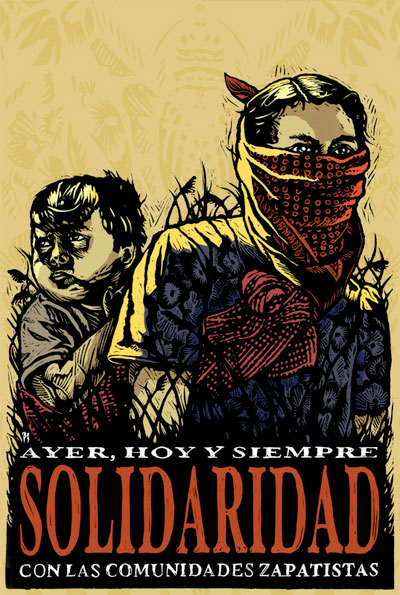
Solidarity with Zapatistas under attack
February 2014
Pronouncement from the UK Zapatista Solidarity Network concerning the recent attacks on Zapatista support bases and hospital staff
To the Zapatista Support bases
To the Good Government Juntas
To the EZLN
To the adherents to the Sexta
To national and international human rights organisations
To the alternative media
To people of good heart in Mexico and the world
In our corner of the world in the United Kingdom we learned with outrage of the recent attacks on the Zapatista support bases (BAZ) of the community of 10 de Abril, autonomous municipality 17 de Noviembre, in the Caracol of Morelia, and on staff from the hospital of San Carlos in Altamirano who came to the assistance of those who had been injured during this attack.
We raise our voices to strongly condemn these repressive actions which are without doubt part of the ongoing counterinsurgency war being waged by the three levels of the bad government in Mexico against the dignified autonomy of the BAZ, who struggle every day for another world, one with democracy, freedom and justice.
The JBG Heart of the Rainbow of Hope has denounced that on the 30th January, 300 members of CIOAC democratic, from the nearby community of 20 de Noviembre, arrived in 18 pickup trucks and attacked the BAZ of 10 de Abril with sticks and stones. During this attack, three Zapatistas were seriously wounded, while two others on each side received minor injuries. A call for assistance was made to the hospital of San Carlos in Altimirano, but when an ambulance and a pickup truck arrived, the hospital staff, including two nuns, were cruelly assaulted by supporters of CIOAC, and prevented from attending to the injured, contrary to the Geneva Convention.
With the support and encouragement of the bad government these people have been trying since 2007 to seize the lands of the community of 10 de Abril, which were recuperated by the Zapatistas in 1994, and which have been worked by them ever since. These attacks have been worsening since last November. The Fray Bartolomé de las Casas Human Rights Centre warns us that “in the region there is an imminent possibility of new attacks and an intensification of the violence, which would be a risk to life and personal integrity, in addition to the violations of the right to territory and autonomy of the Zapatista peoples.” We therefore link our voices to the demands that the authorities of the federal, state and municipal governments:
· act to reduce tension in the conflict and to guarantee the security and integrity of those involved, given their responsibility to guarantee, respect and protect the human rights of the population that is located within their jurisdiction
· investigate and punish those responsible for the attacks. …more
February 23, 2014 Add Comments
King Hamad dispatches Emissaries to Villages and Mosques with offer of dialogue
February 23, 2014 Add Comments
Dear King Hamad, we hear your dialogue, it’s your ideas about democracy that trouble us
February 23, 2014 Add Comments
…the dialogue will continue until the oppositon accepts Hamad’s terms for “democracy”
February 23, 2014 Add Comments
Bahrain Regime uses Violence to Stall Progress on Democracy, move Shia into Minority
February 23, 2014 Add Comments
Bahrain’s Kingdom of Deception – “can’t we just all get along, live in peace and tyranny?”
February 23, 2014 Add Comments
Imperialism’s Creative Destruction in Syria
Western Imperialism’s Creative Destruction in Syria
Finian CUNNINGHAM – 18 Februay, 2014 – Strategic Culture Foundation
US-led Western regime change in Syria might be described as a process of creative destruction. Like Schumpeter’s economic concept of cyclical creative destruction, so too Washington’s political machinations in Syria seem to be playing out likewise.
We begin with the premise that the humanitarian crisis in Syria over the past nearly three years is largely as a result of a Western covert proxy war inflicted on that country. The objective is to destabilize, terrorize and eventuate regime change in the Arab country…
The crisis afflicting Syria with over 130,000 dead and nearly nine million people displaced from their homes – nearly 40 per cent of the total population – would not be occurring if it were not for the infiltration of that country with massive flows of weapons, fighting funds and foreign mercenary brigades. US and NATO Special Forces, along with Western military intelligence, have worked with Saudi, Qatari, Jordanian, Israeli and Turk allies to foment this externally driven insurgency. All under the cover of an Arab Spring revolt.
The highly criminal process has attempted to destroy a sovereign country in order to create a new political order, one that is bereft of the existing political establishment under President Bashar Al Assad. This new order brought about by regime change would be amenable to Western interests in terms of Middle East politics and oil economics. In particular, the desired pro-Western regime would deny Russia, China and Iran of an important ally in the Mediterranean.
Western desire for regime change in Syria is well documented, according to American journalist Seymour Hersh, going back to at least 2007 when the George W Bush Presidency conceived of a plan to undermine the Syrian-Iranian resistance against Washington’s regional hegemony. Other historical studies argue that Western plans for regime change in Syria hark even further back to the 1950s when Dwight Eisenhower was US president.
Last year, former French Foreign Minister Roland Dumas revealed that he was approached two years before the outbreak of latest conflict in Syria in March 2011 by British political figures, who told him of a plot to unseat the Syrian government.
So, our premise of Western regime change being the driver of conflict and humanitarian crisis in Syria is on solid ground.
By contrast, the alternative premise of the events in Syria being the result of a «popular pro-democracy uprising against Assad» is a nebulous narrative emanating from Western governments and the Western mainstream media. That narrative does not stand up to scrutiny. A modified version to accommodate the contradiction that the «uprising» has become driven largely by Al Qaeda-linked brigades goes along the lines that the initial pro-democracy movement has somehow been «hijacked by extremists». But an objective study of the conflict shows that the extremists were always dominant, and that these extremists have been bankrolled, directed and armed by the US-led axis of NATO and regional allies from the outset.
The divergence of these narratives – one based on reality, the other based on propaganda to serve political interests – is reaching a watershed over the humanitarian issue of besieged Syrian cities. The main location currently in focus is the city of Homs, Syria’s third urban centre after the capital, Damascus, and the second city of Aleppo.
In total across Syria, there is reckoned to be some 250,000 civilians trapped in siege situations, according to the United Nations. The conditions for these civilians have deteriorated alarmingly with reports of starvation and privation from lack of basic utilities and medicines.
But which party is responsible for the sieges and the humanitarian suffering? Typically, the Western governments and the Western news media are blaming the Syrian authorities and army for imposing blockades. As with much of their narrative, there is scant factual evidence to support and it seems to rely on assertion and innuendo. …more
February 23, 2014 Add Comments


